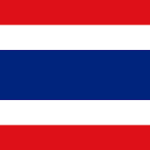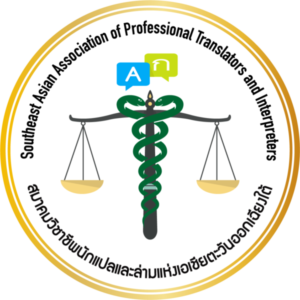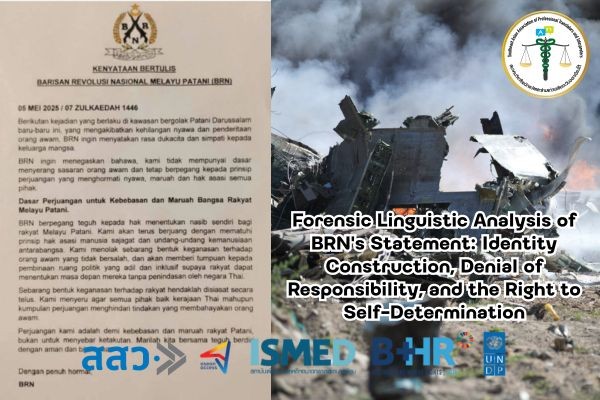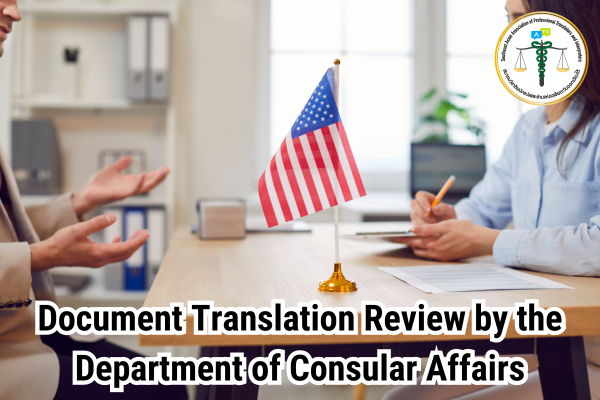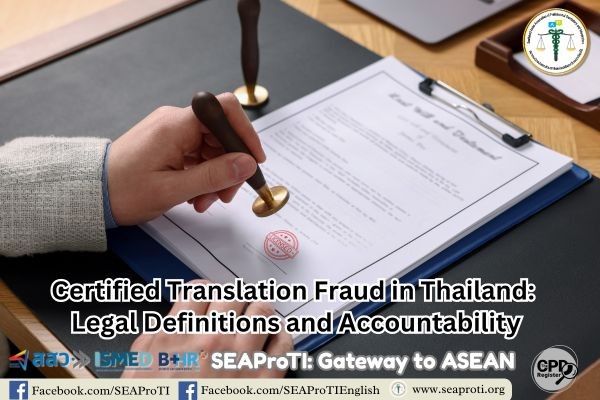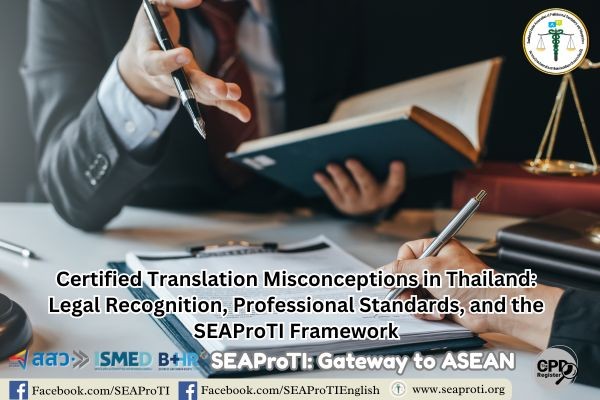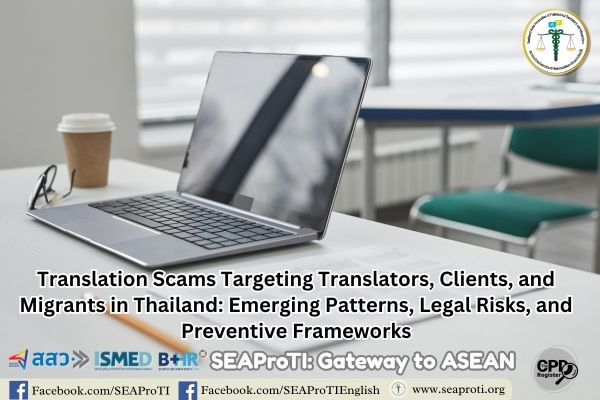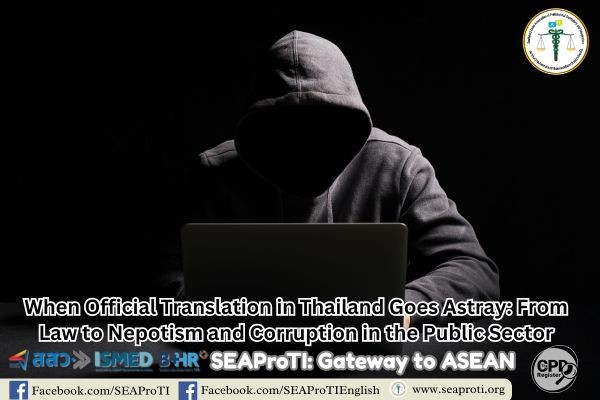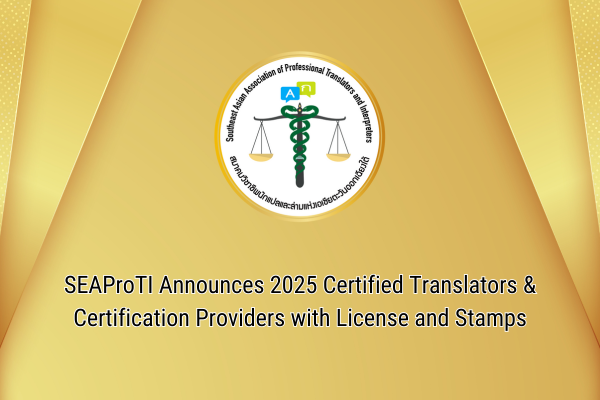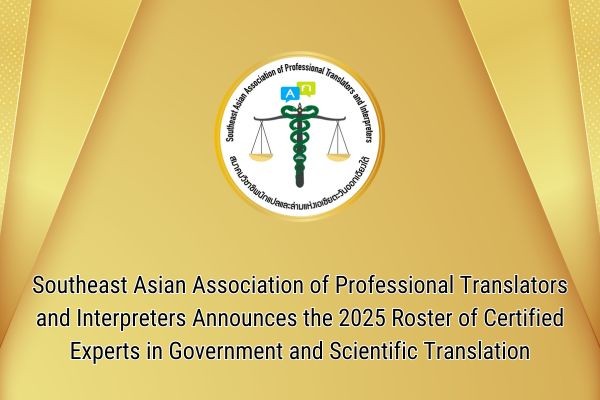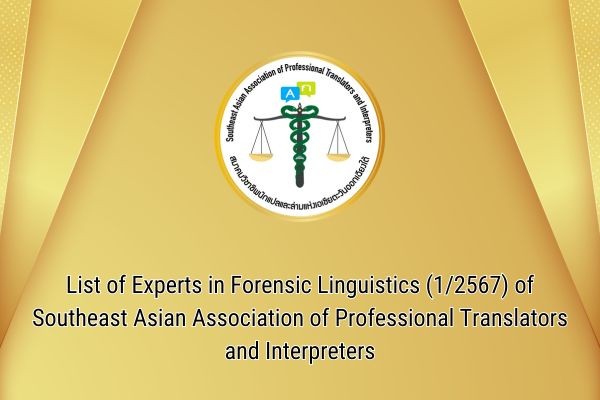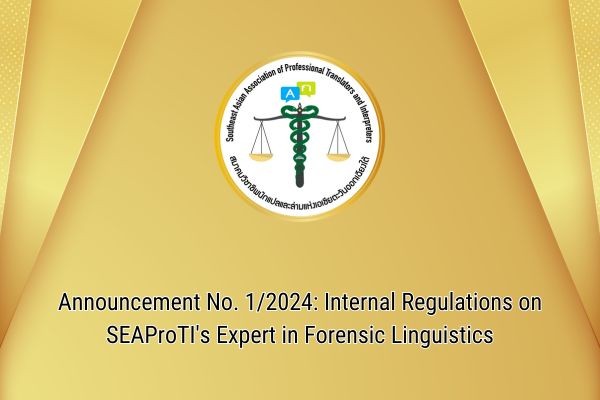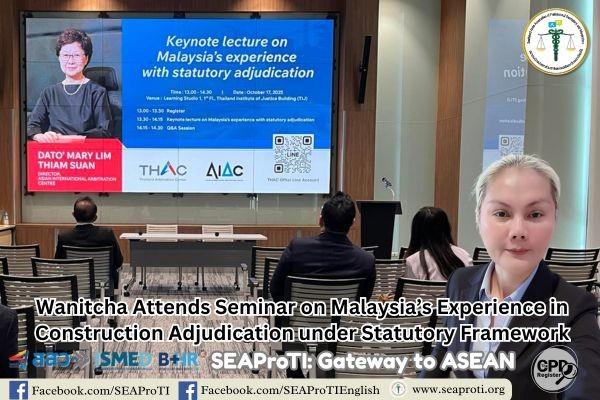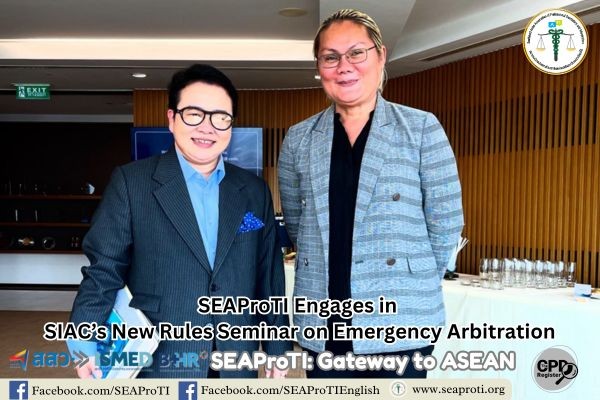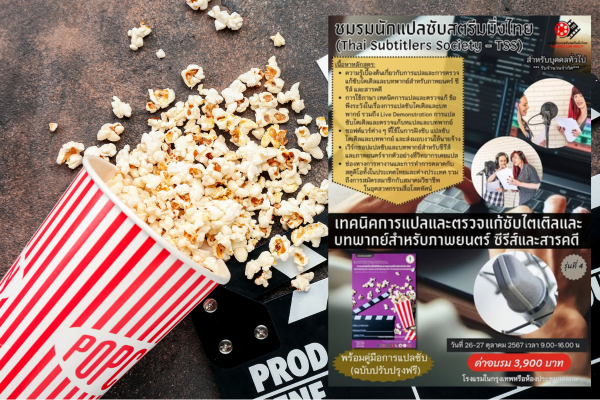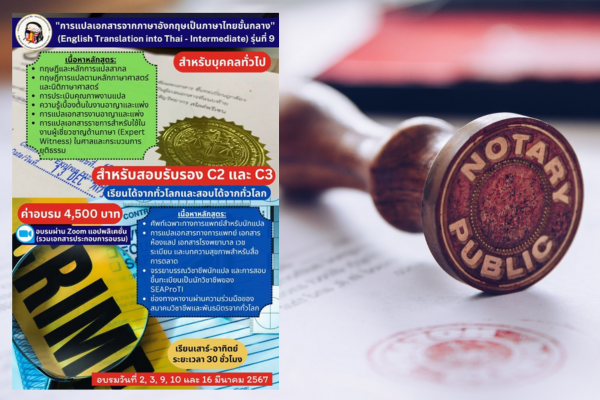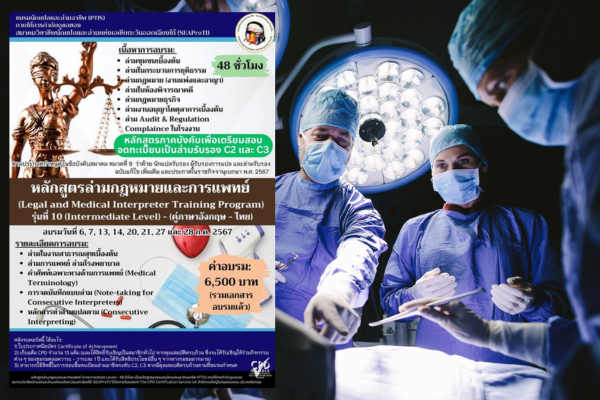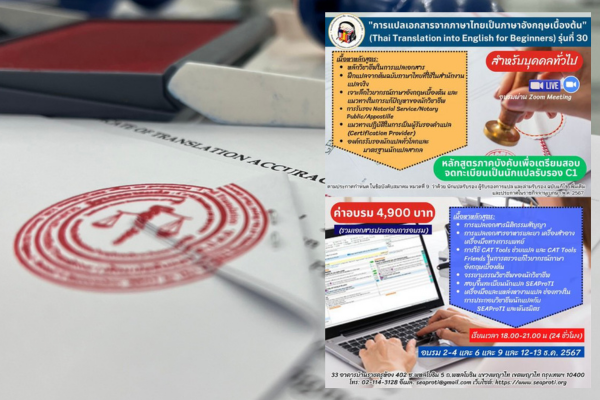Forensic Linguistic Analysis of BRN’s Statement:
Identity Construction, Denial of Responsibility, and the Right to Self-Determination
6 May 2025, Bangkok – A forensic linguistic analysis of the official statement issued by Barisan Revolusi Nasional Melayu Patani (BRN), dated 5 May 2025 / 7 Zulqaedah 1446.
This academic article is written by Wanitcha Sumanat
Contact: wanitchas@gmail.com
1. Introduction
This study examines the statement released by BRN using the academic framework of Forensic Linguistics, analyzing its linguistic features, lexical structure, contextual alignment, and discursive intent. The objective is to assess the authenticity of the document, identify implicit messaging, and explore the political positioning of the issuer, particularly in reference to the use of the term “Patani”.
Using the forensic linguistic framework of Coulthard & Johnson (2007), this analysis incorporates elements of discourse structure, implied meaning, legal-state idioms, and geopolitical context. It aims to answer the following research questions:
- Is the document authentic?
- What message is it intended to convey?
- Why is “Patani” used instead of “Pattani”?
- What are the legal and discursive objectives behind the phrasing?
2. Literature Review
2.1 Forensic Linguistics and Communication in Conflict
Coulthard and Johnson (2007) proposed that linguistic patterns in texts related to legal or conflict situations can be used to determine source credibility, speaker positioning, and legitimacy of claims.
Brown and Levinson’s (1987) Politeness Theory provides tools to decode “conflict-softening speech” such as expressions of condolence and conflict-avoidant language, which are evident in the BRN’s 5 May 2025 statement.
2.2 Self-Determination and Structural Peace
Johan Galtung’s (1996) concept of Positive Peace highlights the elimination of structural violence as essential for real peace, particularly in contexts of ethnic or religious oppression. This is relevant to BRN’s invocation of the right of the Melayu Patani people to shape their own future.
International human rights law, particularly ICCPR (1966), Article 1, which affirms all peoples’ right to self-determination, is central to the rhetoric of BRN, notably through their use of the phrase “hak menentukan nasib sendiri”.
2.3 ASEAN Case Studies
2.3.1 Bangsamoro in the Philippines
The peace process between the Philippine government and MILF culminated in the establishment of BARMM, reflecting a transition from armed movement to legitimate political actor. According to UNDP Philippines (2021), one key success factor was MILF’s increasing use of diplomatic language, human rights discourse, and democratic negotiation.
2.3.2 East Timor
The FRETILIN movement’s statements from 1980–1999 relied heavily on international legal frameworks, particularly the right to self-determination, and gained support from UN Human Rights Commission reports (1997) that criticized Indonesia’s treatment of civilians. These statements share rhetorical similarities with BRN’s, especially the image of a peace-seeking actor.
2.4 Human Rights Reports and the UN
Reports by Human Rights Watch (2022) and the Office of the High Commissioner for Human Rights (OHCHR) regarding Thailand’s Deep South emphasize the need for transparent investigations into violence against civilians and greater protection of the Malay Muslim ethnic group. BRN’s increasing reliance on human rights discourse reflects a strategy to link local struggles to global norms and gain legitimacy on the international stage.
This literature suggests that when armed groups adopt human rights discourse, it is not merely a rhetorical strategy—it is also an attempt to reframe themselves within international legal norms, potentially facilitating a transition from “anti-state actors” to legitimate political players, provided that governments and international communities maintain open dialogue.
3. Methodology
This qualitative study draws on forensic linguistics and political discourse analysis to explore the role of language in BRN’s 5 May 2025 statement.
The analytical framework is based on Coulthard & Johnson (2007), who focus on documents as linguistic evidence. The core components examined include:
- Lexis, modality, and speech acts: to assess word choice, implied meanings, and speech structures reflecting the speaker’s intent and positioning.
- Denial and distancing strategies: to understand how BRN rejects involvement in violence and distances itself from condemnable acts.
- Identity construction: to evaluate how BRN portrays itself—as a liberation movement or a human rights actor rather than an insurgent group.
- Comparison with previous statements (2013–2023): using open-source and civil society archives to trace discourse evolution.
Source Text for Analysis:
(Malay-language statement preserved as-is in original)
“KENYATAAN BERTULIS
BARISAN REVOLUSI NASIONAL MELAYU PATANI (BRN)
05 MEI 2025 / 07 ZULKAEDAH 1446
Berikutan kejadian yang berlaku di kawasan bergolak Patani Darussalam baru-baru ini, yang mengakibatkan kehilangan nyawa dan penderitaan orang awam, BRN ingin menyatakan rasa dukacita dan simpati kepada keluarga mangsa.
BRN ingin menegaskan bahawa, kami tidak mempunyai dasar
menyerang sasaran orang awam dan tetap berpegang kepada prinsip perjuangan yang menghormati nyawa, maruah dan hak asasi semua pihak.
Dasar Perjuangan untuk Kebebasan dan Maruah Bangsa Rakyat Melayu Patani.
BRN berpegang teguh kepada hak menentukan nasib sendiri bagi rakyat Melayu Patani. Kami akan terus berjuang dengan mematubi: prinsip hak asasi manusia sajagat dan undang-undang kemanusiaan antarabangsa. Kami menolak sebarang bentuk keganasan terhadap orang awam yang tidak bersalah, dan akan memberi tumpuan kepada pembinaan ruang politik yang adil dan inklusif supaya rakyat dapat menentukan masa depan mereka tanpa penindasan oleh negara Thai
Sebarang bentuk keganasan terhadap rakyat hendaklah disiasat secara telus. Kami menyeru agar semua pihak baik kerajaan Thai mahupun kumpulan perjuangan menghindari tindakan yang membahayakan orang awam.
Perjuangan kami adalah demi kebebasan dan maruah rakyat Patani, bukan untuk menyebar ketakutan. Marilah kita bersama teguh berdiri dengan aman dan bijaksana
Dengan penuh hormat.
BRN”
English Translation for the Analysis of this Study
“WRITTEN STATEMENT
BARISAN REVOLUSI NASIONAL MELAYU PATANI (BRN)
5 May 2025 / 7 Zulqaedah 1446
Following the recent incident in the conflict-affected area of Patani Darussalam, which resulted in the loss of lives and suffering of civilians, BRN expresses its deepest condolences and sympathy to the families of the victims.
BRN affirms that we have no policy of targeting civilians and remain committed to the principles of struggle that uphold the sanctity of life, dignity, and the fundamental rights of all parties.
Our struggle is rooted in the pursuit of freedom and dignity for the Malay Patani people.
BRN upholds the right to self-determination for the Patani Malay people. We shall continue our struggle in adherence to universal human rights principles and international humanitarian law. We reject any form of violence against innocent civilians and shall focus on building a fair and inclusive political space so that the people may determine their future free from Thai state oppression.
All forms of violence against the people must be investigated with transparency. We call upon all parties—both the Thai government and resistance groups—to refrain from actions that endanger civilians.
Our struggle is for the freedom and dignity of the Patani people, not to spread fear. Let us stand united in peace and wisdom.
With utmost respect,
BRN”
English Translation for Analytical Use (provided above).
This study also draws on international law, especially International Humanitarian Law (IHL) and Human Rights Law, to interpret the document’s references to universal legal rights such as self-determination and civilian protection.
To minimize researcher bias, the analysis is based entirely on open-source documents, excluding interviews or field-based assumptions, in order to prioritize linguistic accuracy and discourse relations.
4. Findings
Using Coulthard & Johnson’s framework, three main findings emerged:
4.1 Authenticity and Credibility
Lexical and speech act analysis reveals consistency with prior BRN peace-related statements:
- Formal Malay language used consistently and without grammatical errors typical of forgeries.
- Dual-calendar dating (CE/Islamic) reflects cultural awareness of Muslim audiences in Southern Thailand.
- Humanitarian and rights-based phrases (e.g. “kami menolak sebarang bentuk keganasan terhadap orang awam”) suggest adherence to human rights norms.
These features indicate a high likelihood of authenticity or authorship by individuals deeply familiar with BRN’s established rhetoric.
4.2 Discursive Objectives
Three discursive functions are identified:
(a) Reducing Public Backlash
Statements like “kami tidak mempunyai dasar menyerang sasaran orang awam” function as disclaimers, distancing BRN from recent violence. Opening condolences further reflect ritualistic politeness (Brown & Levinson, 1987).
(b) Political Identity Framing
The phrase “hak menentukan nasib sendiri” explicitly references ICCPR Article 1, aligning BRN with global human rights movements and reframing them as a legitimate ethnic representative.
(c) Legitimacy Construction
The statement uses moderate assertiveness, avoids radicalism, and references humanitarian law, thereby constructing BRN’s image as a rational political actor fit for international negotiation.
4.3 Use of “Patani” vs. “Pattani”
From a political linguistics perspective, “Patani” is not a mere phonetic variant. It reflects a post-colonial identity assertion, portraying the region as a historic state annexed by Thailand. This mirrors other liberation discourse such as “Bangsamoro” vs. “Muslim Mindanao” or “Timor-Leste” vs. “East Timor”.
This word choice signals political re-positioning and deliberate detachment from Thai state legitimacy.
5. Conclusion
The 5 May 2025 BRN statement can be considered an authentic and strategically crafted document. Its main aims are to:
- Deny involvement in violence against civilians.
- Construct a humanitarian image.
- Emphasize the Malay Patani people’s right to self-determination.
Its use of peaceful, formal language and international human rights frameworks illustrates BRN’s effort to transition from an armed movement to a political actor with international legitimacy.
6. Limitations
While this study uses systematic linguistic and legal analysis, it is limited in the following ways:
6.1 Access to Primary Data
The study relies on publicly available texts. The inability to interview BRN members or verify authorship limits empirical validation.
6.2 Lack of Ethnographic Context
The absence of fieldwork and stakeholder interviews (e.g. locals, religious leaders, journalists) narrows the depth of local contextual understanding.
6.3 Temporal Limitation
This is a single-point-in-time analysis and may not capture the broader discursive shifts of BRN over time.
6.4 Comparative Limitations
While comparisons are made with MILF and FRETILIN, historical and geopolitical differences mean that conclusions are limited to discourse strategies, not outcomes.
6.5 Focus on Written Text Only
The analysis excludes reactions (e.g. Thai state rebuttals, media framing, public opinion), limiting understanding of broader reception and impact.
7. Suggestions for Further Research
7.1 Corpus-Based Analysis
Compile a dataset of BRN statements over time to analyze discursive trends using software tools (e.g. AntConc, Sketch Engine).
7.2 Comparative Discourse Studies
Study discourse from other ASEAN movements like OPM (West Papua), ULFA (Assam), and compare use of legal framing and identity construction.
7.3 Public Reception Analysis
Conduct sentiment analysis or in-depth interviews to assess how such statements influence public attitudes and intergroup perceptions.
7.4 Legal Discourse Analysis
Explore whether such statements could be used as evidence of organizational intent (mens rea) in international law—clarifying the line between terrorist groups and liberation movements under IHL and ICCPR.
7.5 Peace Communication Studies
Investigate linguistic mechanisms that can foster dialogue between state and armed groups—e.g., shared frames of reference, safe space language, and neutral mediators like trained interpreters and translators.
References
- Brown, P., & Levinson, S. (1987). Politeness: Some universals in language usage. Cambridge University Press.
- Coulthard, M., & Johnson, A. (2007). An Introduction to Forensic Linguistics: Language in Evidence. Routledge.
- Galtung, J. (1996). Peace by Peaceful Means: Peace and Conflict, Development and Civilization. SAGE Publications.
- United Nations. (1966). International Covenant on Civil and Political Rights (ICCPR).
- Thai Public Broadcasting Service (ThaiPBS). (2023). BRN’s Communication Strategy and Peace Process Negotiation.
การวิเคราะห์นิติภาษาศาสตร์ของถ้อยแถลงขบวนการ BRN:
อัตลักษณ์ การปฏิเสธความรับผิด และการอ้างสิทธิในการกำหนดชะตากรรมตนเอง
6 พฤษภาคม 2568, กรุงเทพมหานคร – บทวิเคราะห์เชิงนิติภาษาศาสตร์ ถ้อยแถลงของขบวนการแนวร่วมปฏิวัติแห่งชาติมลายูปาตานี (BRN) ลงวันที่ 5 พฤษภาคม 2568 / 7 ซุลเกาะอิดะห์ 1446
บทความวิชาการนี้ เขียนโดย วณิชชา สุมานัส
ติดต่อ wanitchas@gmail.com
1. บทนำ (Introduction)
การศึกษานี้มุ่งวิเคราะห์ถ้อยแถลงของขบวนการ BRN ด้วยกรอบวิชาการด้าน นิติภาษาศาสตร์ (Forensic Linguistics) โดยพิจารณาองค์ประกอบทางวัจนภาษา โครงสร้างถ้อยคำ ความสอดคล้องทางบริบท และเป้าประสงค์ทางวาทกรรม เพื่อประเมินความเป็นเอกสารแท้ การสื่อความหมายโดยนัย และจุดยืนทางการเมืองของผู้เผยแพร่ รวมถึงการอ้างสิทธิในการนิยามตนเองผ่านคำว่า “ปาตานี”
การวิเคราะห์ทาง นิติภาษาศาสตร์ (forensic linguistics) ของคำแถลง “BARISAN REVOLUSI NASIONAL MELAYU PATANI (BRN)” ลงวันที่ 5 พฤษภาคม 2025 / 7 ซุลเกาะอิดะห์ 1446 โดยใช้กรอบการวิเคราะห์ด้านโครงสร้างภาษา ความหมายเชิงนัย สำนวนทางนิติรัฐ และบริบททางภูมิรัฐศาสตร์ เพื่อประเมินด้วยคำถามในกรณีศึกษานี้ (Research Questions) ว่า:
- เอกสารนี้เป็นของจริงหรือไม่
- ตั้งใจสื่อสารอะไร
- เหตุใดจึงใช้คำว่า “ปาตานี” แทน “ปัตตานี”
- วัตถุประสงค์เชิงวาทกรรมและกฎหมายของถ้อยคำในแถลงการณ์นี้คืออะไร
2. ปริทัศน์เอกสาร (Literature Review)
1. กรอบแนวคิดด้านนิติภาษาศาสตร์และการสื่อสารในความขัดแย้ง
การศึกษาด้านนิติภาษาศาสตร์ของ Coulthard และ Johnson (2007) ได้นำเสนอแนวทางการวิเคราะห์ภาษาที่ปรากฏในเอกสารที่เกี่ยวข้องกับข้อพิพาท กฎหมาย และความขัดแย้ง โดยชี้ให้เห็นว่า รูปแบบของภาษา (linguistic pattern) สามารถใช้ในการพิสูจน์ความน่าเชื่อถือของแหล่งข้อมูล การตั้งจุดยืนของผู้พูด และความชอบธรรมในการอ้างสิทธิ์
ขณะที่งานของ Brown และ Levinson (1987) ว่าด้วยทฤษฎีความสุภาพ (Politeness Theory) นำมาใช้เพื่อถอดรหัสโครงสร้างของ “คำพูดที่ปรับระดับความขัดแย้ง” เช่น การแสดงความเสียใจและการใช้วัจนภาษาเพื่อหลีกเลี่ยงการเผชิญหน้า ซึ่งปรากฏชัดในถ้อยแถลงของ BRN ฉบับวันที่ 5 พฤษภาคม 2568
2. แนวคิดเรื่องการต่อสู้เพื่อสิทธิในการกำหนดตนเอง (Self-determination) และสันติภาพเชิงโครงสร้าง
Johan Galtung (1996) เสนอแนวคิดเรื่อง “สันติภาพเชิงบวก” (Positive Peace) ซึ่งไม่ใช่เพียงการหยุดยิง แต่หมายถึงการขจัดโครงสร้างความรุนแรงเชิงสถาบัน โดยเฉพาะในบริบทที่กลุ่มชาติพันธุ์หรือศาสนาอยู่ภายใต้การกดขี่ทางการเมือง การใช้แนวคิดนี้สอดคล้องกับการที่ BRN ยืนยันสิทธิของชาวมลายูปาตานีในการกำหนดอนาคตของตน
หลักสิทธิมนุษยชนระหว่างประเทศ โดยเฉพาะ ICCPR (1966) มาตรา 1 ซึ่งบัญญัติว่า “ประชาชนทุกกลุ่มมีสิทธิในการกำหนดชะตากรรมตนเอง” ถูกอ้างอิงอย่างกว้างขวางในการต่อสู้ของกลุ่มชาติพันธุ์ เช่นเดียวกับในกรณีของ BRN ที่ยกคำว่า “hak menentukan nasib sendiri” มาเป็นแกนกลางของการสื่อสาร
3. กรณีศึกษาในอาเซียน
3.1 กรณีบังซาโมโรในฟิลิปปินส์
กระบวนการสันติภาพระหว่างรัฐบาลฟิลิปปินส์กับ Moro Islamic Liberation Front (MILF) ซึ่งสิ้นสุดด้วยการจัดตั้ง Bangsamoro Autonomous Region in Muslim Mindanao (BARMM) เป็นตัวอย่างของการเปลี่ยนจากขบวนการติดอาวุธสู่กลุ่มที่มีความชอบธรรมทางการเมือง
UNDP Philippines (2021) รายงานว่า หนึ่งในปัจจัยความสำเร็จคือการที่ MILF ใช้ภาษาทางการทูตมากขึ้นในถ้อยแถลง และยึดโยงตนเองเข้ากับวาทกรรมสิทธิมนุษยชนและการเจรจาเพื่อประชาธิปไตย มากกว่าการปลุกระดมทางศาสนา
3.2 กรณีติมอร์ตะวันออก
ขบวนการปลดปล่อยของติมอร์ตะวันออก (FRETILIN) ใช้ถ้อยแถลงในช่วงปี 1980–1999 ที่อิงกับ สิทธิในการกำหนดตนเองตามกฎหมายระหว่างประเทศ และได้รับการสนับสนุนจากรายงานของคณะกรรมาธิการสิทธิมนุษยชนแห่งสหประชาชาติ (UN Commission on Human Rights, 1997) ซึ่งวิพากษ์การปฏิบัติของรัฐบาลอินโดนีเซียต่อพลเรือน
เอกสารเหล่านี้มีลักษณะใกล้เคียงกับถ้อยแถลงของ BRN โดยเฉพาะการใช้ภาษาที่ “สร้างภาพลักษณ์ผู้เรียกร้องสันติ” มากกว่าผู้ใช้ความรุนแรง
4. บทวิเคราะห์จากองค์กรสิทธิมนุษยชนและสหประชาชาติ
รายงานของ Human Rights Watch (2022) และ OHCHR (Office of the High Commissioner for Human Rights) ในบริบทชายแดนใต้ของไทย เตือนถึงความจำเป็นในการ สอบสวนการใช้ความรุนแรงต่อพลเรือนอย่างโปร่งใส และคุ้มครองสิทธิของกลุ่มชาติพันธุ์มลายูมุสลิม
แนวโน้มที่กลุ่มอย่าง BRN ใช้ถ้อยแถลงอิงหลักสิทธิมนุษยชนและมนุษยธรรม สะท้อนความพยายามจะเชื่อมโยงการต่อสู้ภายในประเทศให้เข้ากับกรอบสากล และยกระดับการเคลื่อนไหวเข้าสู่เวทีเจรจานานาชาติ
ปริทัศน์นี้ชี้ให้เห็นว่า ถ้อยแถลงของกลุ่มติดอาวุธที่เปลี่ยนมาใช้กรอบสิทธิมนุษยชน ไม่ได้เป็นเพียงกลยุทธ์เชิงสื่อสารเท่านั้น แต่ยังเป็นการจัดวางตนเองในระบบกฎหมายสากล และอาจนำไปสู่การเปลี่ยนผ่านจาก “ขบวนการต่อต้านรัฐ” ไปสู่ “ผู้เล่นทางการเมืองที่มีความชอบธรรม” ได้ หากรัฐและประชาคมโลกมีแนวทางสนับสนุนพื้นที่สนทนาอย่างต่อเนื่อง
3. ระเบียบวิธีวิจัย (Methodology)
การศึกษาครั้งนี้ใช้ระเบียบวิธีเชิงคุณภาพ (qualitative methodology) โดยอาศัยกรอบการวิเคราะห์นิติภาษาศาสตร์ (forensic linguistics) และวาทกรรมการเมือง (political discourse analysis) เพื่อทำความเข้าใจบทบาทของภาษาในถ้อยแถลงของขบวนการแนวร่วมปฏิวัติแห่งชาติมลายูปาตานี (BRN) ฉบับวันที่ 5 พฤษภาคม 2568
กรอบการวิเคราะห์หลักยึดตามแนวคิดของ Coulthard และ Johnson (2007) ซึ่งมุ่งเน้นการตรวจสอบเอกสารในฐานะหลักฐานทางวัจนภาษา โดยพิจารณาองค์ประกอบสำคัญ ดังนี้:
- การใช้ภาษา (lexis, modality, speech acts): วิเคราะห์การเลือกคำ รูปแบบความหมาย และโครงสร้างการกระทำทางภาษา (speech acts) ที่สะท้อนเจตนาของผู้พูดและการวางจุดยืน
- กลยุทธ์การปฏิเสธและการลดความรับผิด (denial & distancing strategies): ตรวจสอบวิธีการที่กลุ่ม BRN ใช้เพื่อปฏิเสธความเกี่ยวข้องกับเหตุรุนแรง และสร้างระยะห่างจากการกระทำที่อาจถูกประณาม
- การจัดวางอัตลักษณ์ของผู้พูด (identity construction): วิเคราะห์วาทกรรมที่ใช้เพื่อสร้างภาพลักษณ์ของกลุ่มในฐานะ “ขบวนการปลดปล่อย” หรือ “ผู้เคลื่อนไหวเพื่อสิทธิมนุษยชน” แทนที่จะเป็น “ผู้ก่อความไม่สงบ”
- การเทียบเคียงกับถ้อยแถลงก่อนหน้า: ทำการวิเคราะห์เปรียบเทียบกับถ้อยแถลงอื่น ๆ ของ BRN ในช่วงปี 2013–2023 ที่ปรากฏในแหล่งข้อมูลเปิด (open-source intelligence) และคลังข้อมูลภาคประชาสังคม เพื่อพิจารณาการเปลี่ยนแปลงของวาทกรรมในเชิงกลยุทธ์
เนื้อหาที่ใช้ในการศึกษาในครั้งนี้
“KENYATAAN BERTULIS
BARISAN REVOLUSI NASIONAL MELAYU PATANI (BRN)
05 MEI 2025 / 07 ZULKAEDAH 1446
Berikutan kejadian yang berlaku di kawasan bergolak Patani Darussalam baru-baru ini, yang mengakibatkan kehilangan nyawa dan penderitaan orang awam, BRN ingin menyatakan rasa dukacita dan simpati kepada keluarga mangsa.
BRN ingin menegaskan bahawa, kami tidak mempunyai dasar
menyerang sasaran orang awam dan tetap berpegang kepada prinsip perjuangan yang menghormati nyawa, maruah dan hak asasi semua pihak.
Dasar Perjuangan untuk Kebebasan dan Maruah Bangsa Rakyat Melayu Patani.
BRN berpegang teguh kepada hak menentukan nasib sendiri bagi rakyat Melayu Patani. Kami akan terus berjuang dengan mematubi: prinsip hak asasi manusia sajagat dan undang-undang kemanusiaan antarabangsa. Kami menolak sebarang bentuk keganasan terhadap orang awam yang tidak bersalah, dan akan memberi tumpuan kepada pembinaan ruang politik yang adil dan inklusif supaya rakyat dapat menentukan masa depan mereka tanpa penindasan oleh negara Thai
Sebarang bentuk keganasan terhadap rakyat hendaklah disiasat secara telus. Kami menyeru agar semua pihak baik kerajaan Thai mahupun kumpulan perjuangan menghindari tindakan yang membahayakan orang awam.
Perjuangan kami adalah demi kebebasan dan maruah rakyat Patani, bukan untuk menyebar ketakutan. Marilah kita bersama teguh berdiri dengan aman dan bijaksana
Dengan penuh hormat.
BRN”
คำแปลเป็นภาษาอังกฤษเพื่อใช้ในการวิเคราะห์และทำความเข้าใจในงานนี้
“WRITTEN STATEMENT
BARISAN REVOLUSI NASIONAL MELAYU PATANI (BRN)
5 May 2025 / 7 Zulqaedah 1446
Following the recent incident in the conflict-affected area of Patani Darussalam, which resulted in the loss of lives and suffering of civilians, BRN expresses its deepest condolences and sympathy to the families of the victims.
BRN affirms that we have no policy of targeting civilians and remain committed to the principles of struggle that uphold the sanctity of life, dignity, and the fundamental rights of all parties.
Our struggle is rooted in the pursuit of freedom and dignity for the Malay Patani people.
BRN upholds the right to self-determination for the Patani Malay people. We shall continue our struggle in adherence to universal human rights principles and international humanitarian law. We reject any form of violence against innocent civilians and shall focus on building a fair and inclusive political space so that the people may determine their future free from Thai state oppression.
All forms of violence against the people must be investigated with transparency. We call upon all parties—both the Thai government and resistance groups—to refrain from actions that endanger civilians.
Our struggle is for the freedom and dignity of the Patani people, not to spread fear. Let us stand united in peace and wisdom.
With utmost respect,
BRN”
นอกจากนี้ยังใช้แนวคิดจากสาขากฎหมายระหว่างประเทศ โดยเฉพาะในด้าน กฎหมายมนุษยธรรม (international humanitarian law) และ กฎหมายสิทธิมนุษยชน (human rights law) ในการตีความถ้อยคำที่อ้างอิงหลักสิทธิสากล เช่น สิทธิในการกำหนดชะตากรรมตนเอง (self-determination) และการปกป้องพลเรือน (civilian protection)
เพื่อลดอคติของผู้วิจัย การวิเคราะห์ทั้งหมดดำเนินการบนฐานของเอกสารและแหล่งข้อมูลเปิด (open-source documents) โดยไม่อาศัยคำให้สัมภาษณ์หรือข้อสันนิษฐานเชิงประจักษ์จากภาคสนาม ทั้งนี้เพื่อเน้นความถูกต้องทางภาษาและความสัมพันธ์เชิงวาทกรรมของถ้อยแถลงเป็นหลัก
การวิเคราะห์เชิงนิติภาษาศาสตร์-การเมือง (Legal & Political Discourse)
| ประเด็น | ถ้อยคำสำคัญ | วัตถุประสงค์ทางวาทกรรม |
|---|---|---|
| การอ้างสิทธิ์ชอบธรรม | “hak menentukan nasib sendiri” | เสนอแนวทาง self-determination ตามกฎหมายระหว่างประเทศ |
| การคุ้มครองพลเรือน | “menolak sebarang bentuk keganasan terhadap orang awam” | ใช้หลักมนุษยธรรมสากล (IHL) เพื่อเสริมภาพลักษณ์ |
| ความรับผิดชอบของรัฐ | “ditegah, disiasat secara telus” | เรียกร้องความรับผิดจากรัฐไทย ไม่ใช่เฉพาะฝ่ายตน |
| เสรีภาพ/ศักดิ์ศรี | “kebebasan dan maruah” | ยึดหลักสิทธิมนุษยชนสากลเพื่อความชอบธรรมเชิงจริยธรรม |
4. ผลการวิเคราะห์ (Findings)
การวิเคราะห์ถ้อยแถลงของขบวนการแนวร่วมปฏิวัติแห่งชาติมลายูปาตานี (BRN) ฉบับวันที่ 5 พฤษภาคม 2568 ดำเนินไปตามกรอบนิติภาษาศาสตร์ของ Coulthard & Johnson (2007) โดยเน้นการวิเคราะห์โครงสร้างภาษา กลยุทธ์การปฏิเสธความรับผิด การจัดวางอัตลักษณ์ และบริบทสิทธิมนุษยชนระหว่างประเทศ ผลการวิเคราะห์แบ่งออกเป็น 3 ประเด็นหลัก ดังนี้:
4.1 ความเป็นเอกสารแท้และความน่าเชื่อถือ
การวิเคราะห์ระดับถ้อยคำ (lexical analysis) และโครงสร้างการกระทำทางภาษา (speech acts) พบว่า ถ้อยแถลงฉบับนี้สอดคล้องกับรูปแบบภาษาที่ BRN เคยใช้ในบริบทการเจรจาสันติภาพ เช่น คำศัพท์ทางการ การจัดเรียงประโยคที่มีจุดมุ่งหมายทางการเมืองชัดเจน และการใช้สำนวนสากลที่อ้างอิงสิทธิมนุษยชน
องค์ประกอบทางรูปแบบที่น่าสังเกต ได้แก่:
- การใช้ภาษามลายูมาตรฐานที่มีความสม่ำเสมอ (linguistic coherence) และปราศจากข้อผิดพลาดทางไวยากรณ์หรือลักษณะที่มักพบในเอกสารปลอม
- การลงวันที่แบบปฏิทินคู่ (คริสต์ศักราช/ฮิจเราะห์ศักราช) สะท้อนความเข้าใจบริบทวัฒนธรรมท้องถิ่นและกลุ่มเป้าหมายที่เป็นมุสลิมในพื้นที่ชายแดนใต้
- การใช้วลีเชิงนโยบาย เช่น “kami menolak sebarang bentuk keganasan terhadap orang awam” สื่อถึงจุดยืนด้านมนุษยธรรม และแสดงท่าทีตามหลักสิทธิมนุษยชนสากล
จากการวิเคราะห์ถ้อยคำและการจัดวางเชิงวัจนภาษา เอกสารนี้มีลักษณะของ ถ้อยแถลงแท้ หรืออย่างน้อยเป็นเอกสารที่จัดทำโดยผู้ที่มีความเข้าใจในวาทกรรมของ BRN อย่างลึกซึ้ง
4.2 วัตถุประสงค์ทางวาทกรรม
การวิเคราะห์เชิงวาทกรรมและกลยุทธ์ทางภาษาชี้ให้เห็นว่า ถ้อยแถลงฉบับนี้มีเจตนารมณ์ที่หลากหลาย ซึ่งสอดคล้องกับการจัดวางอัตลักษณ์และการสื่อสารเพื่อลดแรงเสียดทานจากสาธารณะ ตลอดจนการสร้างความชอบธรรมในเวทีระหว่างประเทศ
(ก) การลดแรงต่อต้านจากสาธารณชน
ถ้อยคำสำคัญ เช่น “kami tidak mempunyai dasar menyerang sasaran orang awam” เป็น speech act ประเภท “disclaimer” ซึ่งใช้กลยุทธ์ทางภาษาเพื่อลดความเชื่อมโยงกับเหตุการณ์ความรุนแรงล่าสุด โดยมีวัตถุประสงค์เพื่อลดการกล่าวโทษจากภาครัฐและสาธารณชน การแสดงความเสียใจต่อเหยื่อในตอนต้นของเอกสาร ยังสะท้อนกลยุทธ์ ritualistic politeness ตามแนวคิดของ Brown & Levinson (1987)
(ข) การส่งเสริมอัตลักษณ์ทางการเมือง
การใช้วลี “hak menentukan nasib sendiri” ซึ่งหมายถึง “สิทธิในการกำหนดชะตากรรมตนเอง” เป็นการยึดโยงกับกรอบสิทธิมนุษยชนระหว่างประเทศ (ICCPR, 1966) และแสดงเจตนาที่จะนำเสนอ BRN ในฐานะผู้แทนของกลุ่มชาติพันธุ์ที่มีสิทธิพื้นฐานตามกฎหมายสากล ซึ่งเป็นกลยุทธ์สำคัญในวาทกรรมของขบวนการปลดปล่อยในอาเซียน เช่น MILF ในฟิลิปปินส์ และ FRETILIN ในติมอร์ตะวันออก
(ค) การสร้างความชอบธรรม (Legitimacy Construction)
จากการวิเคราะห์ลักษณะ modality และ speech positioning ถ้อยแถลงนี้ไม่มีถ้อยคำที่เป็นการปลุกระดมหรือความรุนแรงทางอุดมการณ์ แต่ใช้ภาษาแบบ “moderate assertiveness” ซึ่งเน้นเจตจำนงในการหาทางออกทางการเมือง การอ้างอิงกฎหมายมนุษยธรรมและสิทธิมนุษยชนสากลจึงทำหน้าที่สร้างความชอบธรรมในการปรากฏตัวบนเวทีระหว่างประเทศ ในฐานะ “ขบวนการที่มีเหตุผล” มากกว่ากลุ่มก่อความไม่สงบ
3.3 การใช้คำว่า “ปาตานี” แทน “ปัตตานี”
ในเชิงภาษาศาสตร์การเมือง (political linguistics) การเลือกใช้คำว่า “ปาตานี” ซึ่งเป็นการถอดเสียงตามแบบมลายู-อาหรับ แทน “ปัตตานี” ในแบบไทย เป็นการกระทำที่มีนัยสำคัญเชิงอัตลักษณ์
การวิเคราะห์การจัดวางอัตลักษณ์ (identity construction) พบว่า คำว่า “ปาตานี” ถูกใช้เพื่อเสนอภาพพื้นที่แห่งนี้ในฐานะ “รัฐประวัติศาสตร์ที่ถูกผนวก” มากกว่าจะเป็นเพียงจังหวัดของไทย การใช้คำนี้จึงเป็นส่วนหนึ่งของวาทกรรมแบบ post-colonial resistance ซึ่งใช้กันในหลายกรณี เช่น Bangsamoro (แทนคำว่า Muslim Mindanao) หรือ Timor Leste (แทน East Timor ภายใต้อำนาจอินโดนีเซีย)
การเลือกใช้คำนี้ไม่ใช่เพียงเรื่องของการถอดเสียง แต่เป็นการจัดวางตนเองใหม่ในเชิงการเมือง และสะท้อนความพยายามปลดตัวเองออกจากกรอบความชอบธรรมของรัฐไทย
5. สรุป (Conclusion)
คำแถลงฉบับวันที่ 5 พฤษภาคม 2568 ของ BRN มีลักษณะเป็นเอกสารแท้อย่างมีนัยสำคัญทางวาทกรรมและกฎหมาย โดยมุ่งหมาย 3 ประการหลัก คือ (1) ปฏิเสธความเกี่ยวข้องกับเหตุรุนแรงที่มีผลต่อพลเรือน, (2) สร้างภาพลักษณ์เชิงมนุษยธรรม, และ (3) ตอกย้ำสิทธิในการกำหนดอนาคตตนเองของประชาชนมลายูปาตานี
การใช้ถ้อยคำเชิงสันติ ภาษาที่เป็นทางการ และการอ้างอิงถึงหลักสิทธิมนุษยชนสากล ล้วนสะท้อนความพยายามของ BRN ในการยกระดับตนเองจาก “ขบวนการติดอาวุธ” ไปสู่ “ผู้มีส่วนร่วมทางการเมือง” บนเวทีนานาชาติ
6. ข้อจำกัดของการวิจัย (Limitations of the Study)
แม้งานวิจัยฉบับนี้จะใช้กรอบนิติภาษาศาสตร์และวาทกรรมสิทธิมนุษยชนระหว่างประเทศเพื่อวิเคราะห์ถ้อยแถลงของขบวนการ BRN อย่างเป็นระบบ แต่ก็ยังมีข้อจำกัดบางประการที่อาจมีผลต่อการตีความและความครอบคลุมของผลการศึกษา ดังนี้:
6.1 การเข้าถึงข้อมูลปฐมภูมิ (Primary Data)
การศึกษานี้อาศัยเอกสารถ้อยแถลงที่เผยแพร่ผ่านช่องทางสาธารณะเท่านั้น โดยไม่สามารถเข้าถึงผู้จัดทำถ้อยแถลงหรือสมาชิกกลุ่ม BRN ได้โดยตรง ทำให้ไม่สามารถตรวจสอบที่มาของเอกสารหรือยืนยันเจตนารมณ์ของผู้เขียนได้โดยตรง ซึ่งเป็นข้อจำกัดในเชิงข้อมูลเชิงประจักษ์ (empirical validation)
6.2 ข้อจำกัดด้านบริบทเชิงลึกของพื้นที่ขัดแย้ง
แม้ว่าการวิเคราะห์จะอิงบริบททางการเมืองและวัฒนธรรมของสามจังหวัดชายแดนภาคใต้ แต่การไม่ลงพื้นที่ภาคสนามและไม่ใช้วิธีวิจัยชาติพันธุ์วิทยา (ethnographic method) ทำให้ขาดมุมมองเชิงคุณภาพจากผู้มีส่วนได้ส่วนเสียในพื้นที่ เช่น ชาวบ้าน นักการศาสนา เจ้าหน้าที่รัฐ หรือผู้สื่อข่าวท้องถิ่น
6.3 ข้อจำกัดเชิงเวลาและการเปลี่ยนแปลงของวาทกรรม
ถ้อยแถลงที่วิเคราะห์ในงานวิจัยนี้เป็นเอกสารชิ้นเดียว ณ จุดเวลาใดเวลาหนึ่ง จึงอาจไม่สามารถสะท้อนพัฒนาการทางวาทกรรมของ BRN ได้อย่างครอบคลุมตลอดช่วงเวลา ทั้งนี้ ภาษาของกลุ่มเคลื่อนไหวทางการเมืองมักเปลี่ยนแปลงตามบริบททางการทูตและแรงกดดันจากสังคม ซึ่งอาจส่งผลต่อความแม่นยำของการวิเคราะห์ในระยะยาว
6.4 ข้อจำกัดของการวิเคราะห์เชิงเปรียบเทียบ
แม้ว่าจะมีการเชื่อมโยงกับกรณีศึกษาอื่นในอาเซียน เช่น มินดาเนาและติมอร์ตะวันออก แต่ลักษณะทางประวัติศาสตร์และภูมิรัฐศาสตร์ของแต่ละกรณีแตกต่างกันอย่างมีนัยสำคัญ การเปรียบเทียบจึงทำได้เฉพาะในมิติของวาทกรรมและการใช้ภาษาเท่านั้น ไม่สามารถสรุปถึงผลลัพธ์หรือแนวทางการจัดการความขัดแย้งได้ในลักษณะทั่วไป
6.5 การวิเคราะห์จำกัดเฉพาะภาษาเขียน
งานวิจัยนี้มุ่งวิเคราะห์เฉพาะ “ถ้อยแถลงเป็นลายลักษณ์อักษร” โดยไม่ได้รวมการวิเคราะห์ปฏิกิริยาต่อถ้อยแถลง (เช่น ข่าวตอบโต้ของรัฐไทย, คำวิจารณ์จากสาธารณชน หรือการนำเสนอในสื่อโซเชียลมีเดีย) ซึ่งอาจจำกัดมิติการเข้าใจผลกระทบของภาษาต่อการรับรู้ของสังคม
7. ข้อเสนอแนะเพื่อการศึกษาเพิ่มเติม (Suggestions for Further Research)
จากผลการวิเคราะห์ที่ได้ในงานวิจัยฉบับนี้ ผู้วิจัยเห็นว่าการศึกษาถ้อยแถลงของขบวนการทางการเมืองในบริบทความขัดแย้งชายแดนใต้สามารถขยายผลต่อไปได้ในหลายทิศทาง ทั้งในด้านระเบียบวิธี สาระทางเนื้อหา และมิติเชิงเปรียบเทียบ ดังนี้:
7.1 การศึกษาถ้อยแถลงในรูปแบบชุดข้อมูล (Corpus-Based Analysis)
แนะนำให้มีการรวบรวมถ้อยแถลงของ BRN และกลุ่มอื่น ๆ อย่างเป็นระบบในช่วงเวลาที่หลากหลาย เพื่อวิเคราะห์การเปลี่ยนแปลงของวาทกรรมทางการเมืองและจุดยืนเชิงนโยบาย ด้วยวิธีวิเคราะห์เชิงปริมาณ เช่น การใช้ซอฟต์แวร์วิเคราะห์ถ้อยคำ (e.g. AntConc, Sketch Engine) ซึ่งจะช่วยระบุแนวโน้มทางภาษาที่สัมพันธ์กับช่วงเหตุการณ์สำคัญ เช่น การเจรจาสันติภาพหรือการใช้ความรุนแรง
7.2 การเปรียบเทียบข้ามกลุ่มและข้ามประเทศ (Comparative Discourse Studies)
เสนอให้ขยายการศึกษาไปยังถ้อยแถลงของขบวนการกึ่งการเมืองในภูมิภาคอาเซียน เช่น MILF (ฟิลิปปินส์), FRETILIN (ติมอร์ตะวันออก), OPM (ปาปัวตะวันตก), หรือ ULFA (อัสสัม อินเดียตะวันออกเฉียงเหนือ) เพื่อเปรียบเทียบการใช้วาทกรรมสิทธิมนุษยชน การอ้างอิงกฎหมายระหว่างประเทศ และกลยุทธ์การจัดวางอัตลักษณ์ทางการเมือง
7.3 การศึกษาปฏิกิริยาทางสังคมต่อถ้อยแถลง (Reception and Public Discourse)
ควรมีการวิจัยในเชิง “ผลกระทบของภาษา” โดยศึกษา การรับรู้ของสาธารณชนต่อถ้อยแถลง ผ่านสื่อมวลชน โซเชียลมีเดีย หรือความคิดเห็นของชุมชนในพื้นที่ ซึ่งจะช่วยให้เข้าใจว่าถ้อยแถลงส่งผลต่อทัศนคติของประชาชนอย่างไร โดยอาจใช้วิธีสัมภาษณ์เชิงลึก (in-depth interviews) หรือการวิเคราะห์ความคิดเห็นออนไลน์ (sentiment analysis)
7.4 การวิเคราะห์เชิงกฎหมาย (Legal and Normative Discourse Analysis)
เสนอให้ศึกษาว่าถ้อยแถลงลักษณะนี้สามารถนำไปใช้เป็น หลักฐานเชิงเจตนารมณ์ (mens rea) หรือพฤติกรรมเชิงองค์กร ได้อย่างไรในบริบทกฎหมายระหว่างประเทศ โดยเฉพาะในประเด็นการแยกแยะระหว่าง “ขบวนการก่อการร้าย” กับ “ขบวนการปลดปล่อย” ภายใต้กรอบของ IHL และ ICCPR
7.5 การเชื่อมโยงกับการสื่อสารเพื่อสันติภาพ (Peace Communication)
ควรมีการศึกษาถึง บทบาทของภาษาทางเลือกในการสร้างสะพานสื่อสาร ระหว่างรัฐกับกลุ่มติดอาวุธ เช่น การใช้ภาษากลางร่วม (common frame of reference), การจัดวงสนทนาแบบปลอดภัย (safe space discourse) และกลไกสื่อกลางทางภาษาที่มีความเป็นกลาง เช่น ล่ามและนักแปลมืออาชีพในการเจรจา
เอกสารอ้างอิง (References)
- Brown, P., & Levinson, S. (1987). Politeness: Some universals in language usage. Cambridge University Press.
- Coulthard, M., & Johnson, A. (2007). An Introduction to Forensic Linguistics: Language in Evidence. Routledge.
- Galtung, J. (1996). Peace by Peaceful Means: Peace and Conflict, Development and Civilization. SAGE Publications.
- United Nations. (1966). International Covenant on Civil and Political Rights (ICCPR).
- Thai Public Broadcasting Service (ThaiPBS). (2023). BRN’s Communication Strategy and Peace Process Negotiation.
